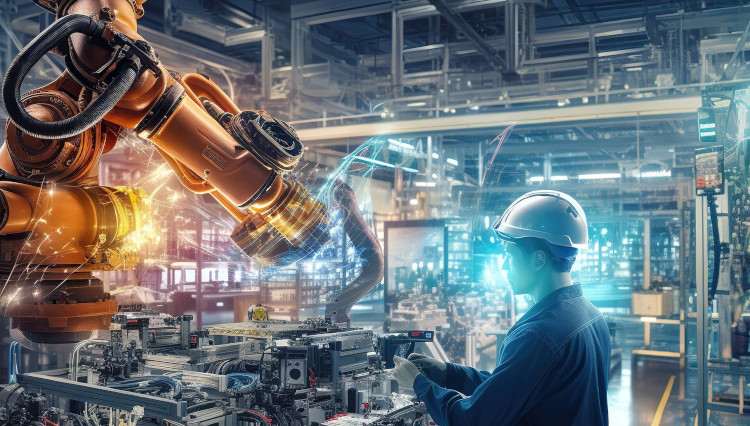Cybersecurity in Factory 4.0 Era

The fourth industrial revolution – commonly referred to as Industry 4.0 – is transforming how manufacturing and industrial operations function. Smart factories, connected devices, and the fusion of information technology (IT) with operational technology (OT) are creating unprecedented opportunities for efficiency, innovation, and data-driven decision-making. Yet, this digital evolution also brings with it a rapidly expanding threat landscape that demands a new approach to cybersecurity in modern factory era.
The Challenge of IT and OT Convergence
Traditionally, IT systems – such as data centers, business applications, and communications—were separated from OT environments, which control physical processes and machinery through systems like PLCs and SCADA. The integration of these two domains is a cornerstone of Industry 4.0, enabling real-time analytics, predictive maintenance, and automation. However, it also exposes previously isolated OT networks to the same cyber threats that plague corporate IT systems.
Many industrial devices were never designed with cybersecurity in mind. They often rely on outdated protocols, use weak authentication, and lack the ability to receive secure updates. As a result, cybercriminals can exploit these vulnerabilities to gain control over critical processes or disrupt entire production lines.
Emerging Threats and Risks
The increasing connectivity of industrial environments has made them attractive targets for ransomware groups and nation-state actors. Attacks no longer focus solely on data theft but also on operational disruption and physical damage. Critical infrastructure sectors – such as energy, transportation, and manufacturing – face particularly high risks, as a single breach can have cascading effects on public safety and economic stability.
Supply chain vulnerabilities further complicate the situation. A compromised software update or component from a third-party supplier can infiltrate entire networks, as seen in major global incidents like the SolarWinds attack.
The Blurring Line Between Cyber and Physical Worlds
In the Industry 4.0 landscape, cybersecurity is inseparable from physical safety. A malicious cyber intrusion can trigger equipment failures, production halts, or even endanger human lives. Consequently, cyber risk management must be integrated with health, safety, and operational resilience frameworks.
Regulatory and Compliance Imperatives
The European Union is driving this integration through a series of regulations designed to strengthen industrial cybersecurity:
- NIS2 Directive mandates incident reporting, accountability, and risk-based measures for critical sectors.
- DORA (Digital Operational Resilience Act) ensures that organizations maintain resilience across their digital supply chains.
- The EU Cyber Resilience Act imposes new security obligations on digital products, emphasizing secure design and vulnerability management.
These frameworks collectively mark a shift toward treating cybersecurity as a fundamental requirement for market access and business continuity – not a discretionary investment.
Building Resilient Industrial Security
To protect digitalized operations, organizations must adopt a multi-layered, proactive defense strategy:
- Network Segmentation and Zero Trust: Isolate IT and OT environments and implement strict access controls.
- AI-Driven Monitoring: Deploy anomaly detection systems capable of identifying suspicious behavior in real time.
- Security by Design: Ensure that all devices and software are developed with built-in security features.
- Integrated Physical and Cyber Defense: Link physical security systems with digital monitoring for unified protection.
- Human Factor Awareness: Provide ongoing cybersecurity training and awareness programs for employees at every level.
- Incident Preparedness: Develop and test response plans that cover both cyber and physical dimensions of industrial operations.
A Strategic Imperative for the Future
Industry 4.0 offers immense potential – but without robust cybersecurity, its benefits can quickly turn into liabilities. As industrial systems become more connected, every device and process becomes a potential entry point for attack. The organizations that recognize cybersecurity as a strategic enabler – not merely a compliance checkbox – will be the ones best equipped to thrive in this new industrial era.
In the age of Industry 4.0, resilience is not just about keeping machines running – it’s about ensuring the security, safety, and sustainability of the entire digital ecosystem, requiring a new central role for cybersecurity in modern factory era.
Read the original article (in Greek).



